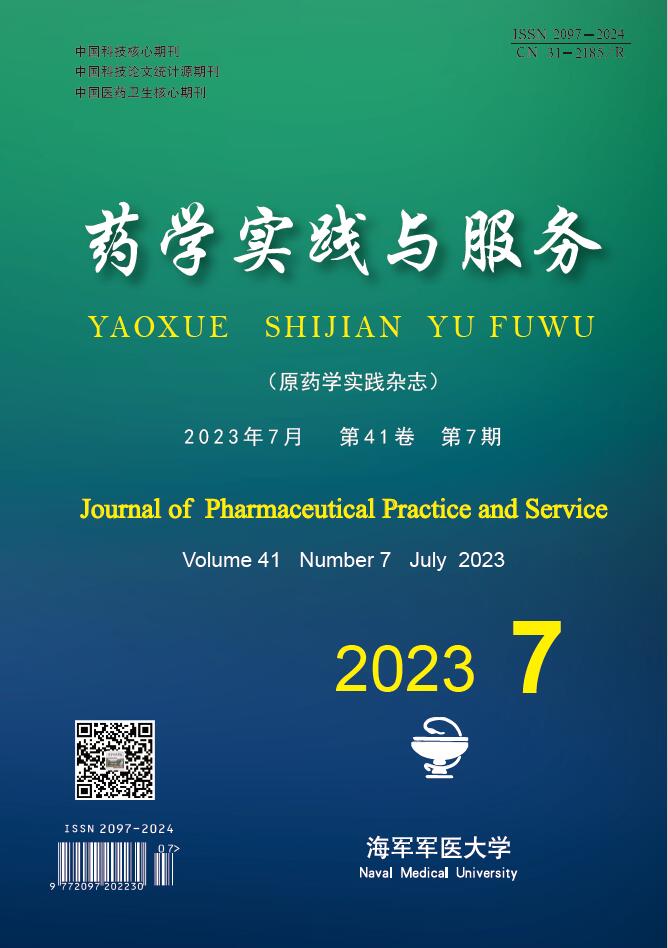-
抗菌肽是一种存在于各种生物体内的防御性多肽,是生物进化过程中留存的重要先天免疫组成部分[1]。鱼类是抗菌肽的重要来源之一,已被发现的鱼类抗菌肽已达上百种。Epinecidin-1抗菌肽于2006年首次从石斑鱼白细胞的cDNA文库被鉴定发现,其基因由3个内含子和4个外显子组成,编码一种由25个氨基酸(序列为FIFHIIKGLFHAGKMIHGLVTRRRH)组成的成熟抗菌肽。这种抗菌肽的分子量为2985.63,等电点为 12.31。Epinecidin-1抗菌肽属于piscidins 家族,具有两亲性的α-螺旋结构,两侧含有疏水和亲水残基,能破坏病原体细胞膜的完整性从而达到杀伤作用[2]。通常,Epinecidin-1抗菌肽mRNA在石斑鱼的各种器官组织中均能表达,尤其是在头肾、腮、皮肤等部位。在细菌脂多糖的刺激下,石斑鱼头肾内Epinecidin-1抗菌肽 mRNA的转录表达量显著增加,翻译出更多的Epinecidin-1抗菌肽用来抵御外来病原微生物的侵入[3]。
由于从生物样品中获得研究所需的大量抗菌肽相当困难,因此抗菌肽的化学合成已成为首选方法[4]。Epinecidin-1抗菌肽可以采用Fmoc固相多肽合成法制备获得,并通过反相高效液相色谱法与质谱法分别对其进行纯化与分析。与完整的Epinecidin-1抗菌肽相比,合成的21聚体Epinecidin-1抗菌肽也能保护鱼类免受感染,但总体活性较低。尽管如此,由于合成短肽更具成本效益,大多数研究还是选择21聚体Epinecidin-1抗菌肽,并在C端酰胺化,用以改善其抗菌活性[5]。合成的Epinecidin-1抗菌肽具有多种药理活性,包括抗病原微生物、免疫调节、抗癌、伤口愈合等,已被用于局部伤口的愈合治疗以及提高水产养殖鱼类的免疫力方面[6]。本文旨在介绍Epinecidin-1抗菌肽的作用机制、药理活性、局限性以及应用前景方面的研究进展,为进一步研究与应用提供借鉴。
-
虽然大量研究已经发现Epinecidin-1抗菌肽具有抗微生物、免疫调节、促伤口愈合活性等生物活性,但其作用机制还未完全明确。目前研究认为,Epinecidin-1抗菌肽的作用方式可分为直接杀伤作用与免疫调节作用。
-
抗菌肽的抗菌作用可部分归因于抗菌肽所带的正电荷与细菌表面的负电荷结构成分产生的静电吸引作用,而这种静电作用可以使抗菌肽非特异性吸附到细菌表面进行直接杀伤。根据酰胺化Epinecidin-1抗菌肽的结构,研究者已经提出几种不同的直接杀伤机制模型。一种作用机制是“地毯”模型。在该模型中,Epinecidin-1抗菌肽附着到目标细胞膜的磷脂头部基团而不插入疏水区域,通过中断膜曲率诱导膜崩解。另一种机制是“桶形”模型,即Epinecidin-1抗菌肽的两亲性α-螺旋直接插入细胞膜的亲脂性区域并产生跨膜孔,直接破坏细胞膜的完整性致其死亡[2]。Narayana等[7]通过透射电子显微镜发现Epinecidin-1处理的幽门螺杆菌以“鬼影”细胞(细胞核溶解消失,残留细胞轮廓)的形式出现,并提出Epinecidin-1选择性诱导细菌膜的负高斯曲率,引起膜的破坏以及跨膜孔的形成,进而使细胞的内容物泄漏并致其死亡。此外,研究者还提出了“环形”模型、“聚集”通道模型假说来解释抗菌肽的直接杀伤作用[8]。
-
除直接对膜的破坏杀伤作用外,Epinecidin-1抗菌肽能与宿主免疫细胞上的外膜蛋白或胞内蛋白相互作用,刺激多种信号转导途径,调节免疫相关基因并增加促炎细胞因子的产生与释放,从而增强宿主对细菌、病毒等病原体的免疫反应[9]。Su等[10]研究证明了Epinecidin-1抗菌肽可以通过抑制Toll样受体的内化以及增强下游信号(活性氧、Akt、p38和核因子κB)的传导来减轻G+菌磷壁酸所诱导的宿主炎症。Huang等[11]利用转录组测序技术与实时荧光定量PCR技术研究了Epinecidin-1抗菌肽在石斑鱼脾脏淋巴细胞的免疫调节作用。结果显示,该抗菌肽能显著上调白介素-1β、肿瘤坏死因子α、T细胞抗原受体以及主要组织相容性复合体,并通过上调细胞周期相关基因的表达来促进脾脏淋巴细胞的增殖。此外, Epinecidin-1还能通过上调斑马鱼中细胞骨架角蛋白和原肌球蛋白等基因的表达来稳定宿主细胞骨架,从而增强宿主对病原体的抗性[12]。
-
在体内外研究中,Epinecidin-1抗菌肽表现出对多种海洋G−菌、G+菌以及真菌的广谱抗菌活性,包括多种弧菌属、气单胞菌属、肠杆菌科、脑膜炎黄杆菌等 [2]。Epinecidin-1抗菌肽对部分耐药菌也具有很强的抗菌活性。Huang等[13]研究发现,2.5 mg/kg静脉给药Epinecidin-1抗菌肽可使耐甲氧西林的金黄色葡萄球菌(MRSA)感染的猪完全存活,而万古霉素治疗组存活率仅为80%。该抗菌肽可显著减少感染MRSA猪体内的细菌数,并有效控制MRSA诱导的炎症。Pan等[14]研究发现,Epinecidin-1抗菌肽对抗生素耐药的铜绿假单胞菌具有良好的抗菌活性,其对耐药铜绿假单胞菌的最小抑菌浓度(3.12 µg/ml)比亚胺培南(200 µg/ml)更低。Narayana等[7]研究了Epinecidin-1抗菌肽对不同幽门螺杆菌的作用。该抗菌肽的最小抑菌浓度和最小杀菌浓度分别为8~12 µg/ml与12.5~25 µg/ml,其对幽门螺杆菌的杀菌作用呈现剂量与时间依赖性。幽门螺杆菌在含2倍或1倍最小抑菌浓度的抗菌肽培养基内分别培养1 h与12 h后,细菌计数均能降低99%。Chen等[15]通过电子显微镜观察到Epinecidin-1抗菌肽能使白色念珠菌的细胞膜破裂、收缩,其最小抑菌浓度为25 µg/ml。
此外,Epinecidin-1抗菌肽可抑制多种类型的病毒,包括口蹄疫病毒,神经坏死病毒和日本脑炎病毒等。低浓度Epinecidin-1抗菌肽(6.2 µg/ml)可阻断口蹄疫病毒进入仓鼠肾细胞,而高浓度Epinecidin-1抗菌肽(125 µg/ml)对口蹄疫病毒有较强的杀伤作用[16]。Epinecidin-1抗菌肽与日本脑炎病毒共注射可以显著激活辅助型T细胞2来诱导脑炎病毒抗体的产生,调节免疫应答基因的表达,最终增强宿主对病毒的抗性[17]。
除广谱抗菌与抗病毒外,还有研究发现Epinecidin-1抗菌肽能杀伤多种寄生虫,抑制肿瘤细胞增殖,促进皮肤和神经损伤的修复。Epinecidin-1抗菌肽能显著抑制阴道毛滴虫的生长,其最小抑菌浓度为62.5 µg/ml[18]。Epinecidin-1抗菌肽也能通过增加细胞内钙水平,从而诱导活性氧的产生并激活钙蛋白酶,继而引起线粒体的损伤和肿瘤细胞的死亡[19]。Lumpkins等[20]研究发现Epinecidin-1抗菌肽能诱导神经胶质纤维酸性蛋白的产生,而该蛋白与星形胶质细胞活化修复神经损伤相关。
-
尽管Epinecidin-1抗菌肽已经在诸多研究中表现出多样的药理活性,但其潜在局限性也不容忽视。这些局限性包括生物利用度低下、潜在毒性、特定生理环境下不稳定以及潜在的耐药性等。
静脉给药是Epinecidin-1抗菌肽理想的给药途径,但由于肽链结构存在稳定的两亲性α-螺旋结构,其剂量依赖性溶血效应在静脉使用期间应特别关注。肌内注射75 mg/kg和100 mg/kg Epinecidin-1抗菌肽会使1/3的实验小鼠出现瞳孔缩小但没有全身中毒症状,且5 h后基本恢复正常,但这种潜在毒性也可能限制其在临床的应用[14]。Epinecidin-1抗菌肽虽然在实验动物模型上的应用被证明是相对安全的,但仍需要进一步研究以确定其在人体应用的最佳用药方式和剂量。
此外,Epinecidin-1抗菌肽作为一种多肽,口服给药容易被胃肠道酶快速降解且很难穿透肠黏膜,因此口服给药方式受到限制。进入血液的抗菌肽也会被血浆中蛋白水解酶失活,并通过肝脏和肾脏快速清除,导致其短暂的作用时间;到达靶器官的Epinecidin-1抗菌肽活性会因体内pH值、温度、离子等因素而受到影响,从而导致其作用效果不稳定[21]。当然,Epinecidin-1抗菌肽在杀伤病原微生物的过程中必然会出现耐药菌,因此,如何保持该抗菌肽的杀伤作用还有待进一步研究。
-
虽然Epinecidin-1抗菌肽存在一些局限性,但是研究人员可以通过多肽定向修饰改造、纳米载体递送等方法克服其使用限制,从而提高抗菌肽的稳定性、安全性以及生物利用度。鉴于Epinecidin-1抗菌肽的多种药理活性,其在抗感染、局部伤口愈合、水产养殖等方面存在巨大的潜在应用价值。如前文所述,Epinecidin-1抗菌肽能广谱杀伤抑制多种细菌(包括多重耐药菌MRSA、创伤弧菌、幽门螺旋杆菌等),真菌(白念珠菌),病毒(日本脑炎病毒、神经坏死病毒、口蹄疫病毒等),寄生虫(阴道毛滴虫)等病原体,这就意味着Epinecidin-1抗菌肽在抗病原微生物方面存在应用潜力,尤其适用于海洋病原微生物(包括创伤弧菌、副溶血性弧菌等)感染的治疗[22]。由于Epinecidin-1抗菌肽能抑制杀伤痤疮丙酸杆菌并诱导皮肤角质形成细胞增殖来促进伤口的愈合过程,故其与胶原蛋白联合使用策略可能对化妆品行业有潜在的商业价值[23]。Epinecidin-1抗菌肽能显著增强宿主对日本脑炎病毒灭活疫苗的免疫应答,因此具有成为新型蛋白类免疫佐剂的开发价值[17]。鉴于Epinecidin-1抗菌肽能通过线粒体超极化并产生活性氧诱导肿瘤细胞DNA损伤和坏死,因此,将其与靶向递送载体相结合有可能成为潜在的新型抗肿瘤药物[24]。此外,将Epinecidin-1抗菌肽基因转导至鱼类或者将其掺入鱼饲料中,在一定程度上能改善鱼类的免疫力,这在水产养殖领域存在相当大的应用价值[25]。
-
Epinecidin-1抗菌肽作为石斑鱼抵抗海洋病原体的第一道天然防御屏障,具有抗病原微生物、免疫调节、伤口愈合等多种药理活性。本文综述了该抗菌肽的作用机制与药理活性,并探讨了该抗菌肽的潜在局限性与应用前景。由于Epinecidin-1抗菌肽来源于海洋鱼类,且对多种海洋病原微生物具有显著的杀伤抑制作用,故在治疗海水浸泡伤感染方面具有潜在的转化应用潜力。未来,针对Epinecidin-1抗菌肽还需在药动学、药效学、潜在毒性、最佳治疗剂量等各方面开展更充分的研究。
Research progress on antibacterial peptides Epinecidin-1
doi: 10.12206/j.issn.2097-2024.202108100
- Received Date: 2021-08-19
- Rev Recd Date: 2022-09-30
- Publish Date: 2023-07-25
-
Key words:
- antimicrobial peptides /
- Epinecidin-1 /
- mechanism
Abstract: The antimicrobial peptide Epinecidin-1 is a kind of small molecule active peptides extracted from Epinephelus coioides, which serves as the first line of defense for innate immune defense system of Epinephelus coioides against various pathogens. In vitro and in vivo studies have confirmed that the antimicrobial peptide Epinecidin-1 not only exhibits broad-spectrum anti-pathogen activities (including bacteria, fungi, viruses, and parasites, etc.), but also has pharmacological activities such as immune regulation, anti-cancer and wound healing. In this paper, the relevant research on the antimicrobial peptide Epinecidin-1 in recent years were summarized, including its mechanism of action, pharmacological activities, potential limitations and application prospects , so as to provide information for further research.
| Citation: | WANG Jirong, HAN Han, DENG Li. Research progress on antibacterial peptides Epinecidin-1[J]. Journal of Pharmaceutical Practice and Service, 2023, 41(7): 400-402, 427. doi: 10.12206/j.issn.2097-2024.202108100 |








 DownLoad:
DownLoad: